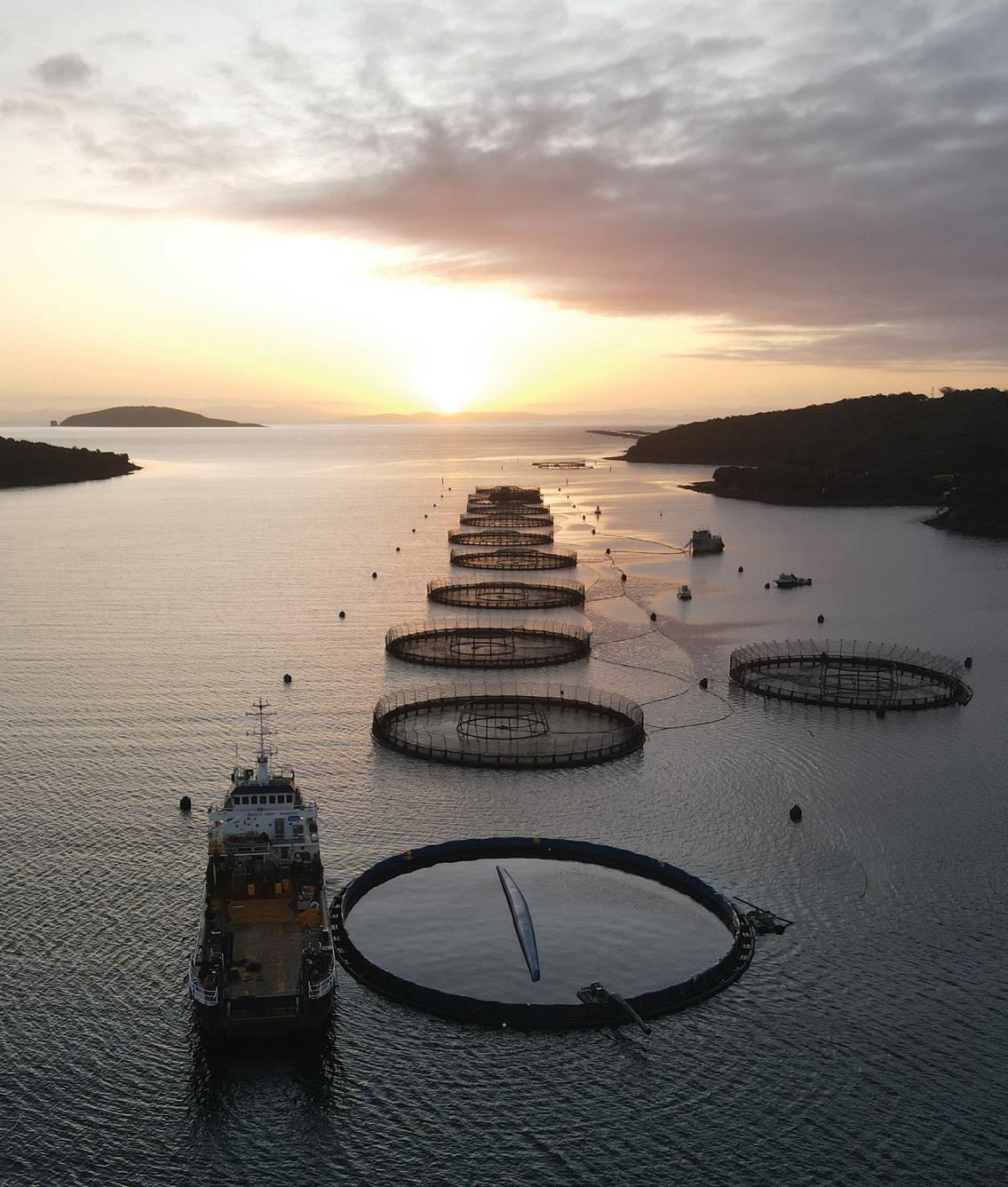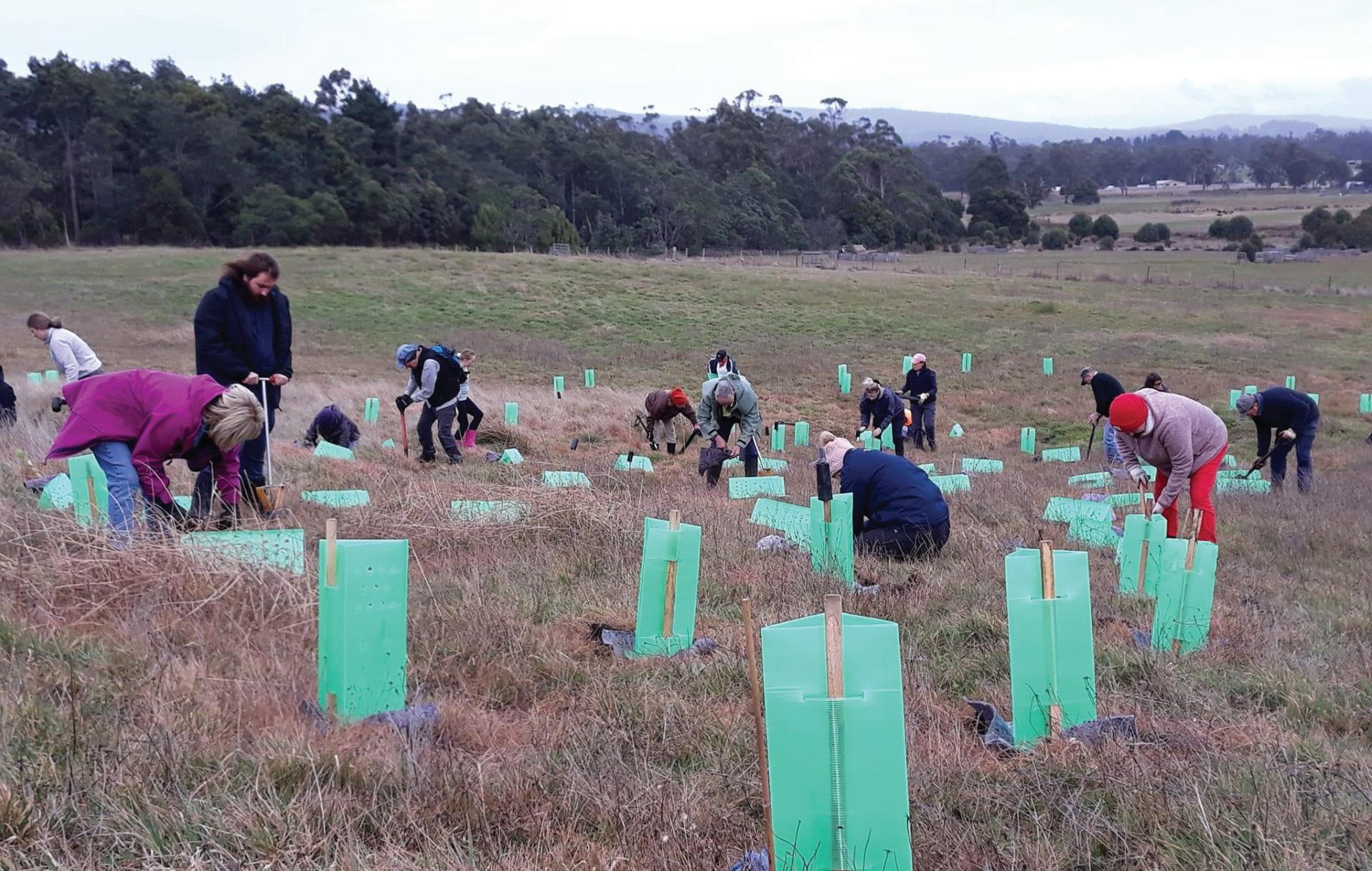
1 minute read
Tassal reducing relience on diesel power
Four Tassal salmon farming leases previously powered by diesel generators are now running on shore power.
These leases have had power supply connected from the shore to each feed barge using submersible cable. The shore power project has reduced Tassal’s dependence on fossil fuels, moving from non-renewable energy to a renewable energy source.
This has reduced diesel consumption significantly, and therefore the company’s carbon footprint, while also reducing the noise emissions from each of its leases.
Tassal is currently assessing other sites for their suitability to convert to on-shore power.
Sixteen diesel compressors have also been removed from feed barges on Tassal leases and replaced with electric compressors.
Recycled Tree Guards Saving Native Gums
will revegetate this property with 2,000 E. ovata seedlings in Spring later this year.
“Our focus is Eucalyptus ovata (black gum) forest and woodland communities. Not only is this forest type listed as threatened in its own right at the state and Commonwealth level, but it also represents critical habitat for the swift parrot and forty-spotted pardalote in Tasmania.” BGCG President Isaac Standaloft said.
Thousands of recycled tree guards from Huon’s Sassafras processing plant have been given a new lease on life.
The guards were donated to Black Gum Conservation Group (BGCG), a volunteer led non-profit, under parent organisation Wildcare Tasmania.
The group focuses on habitat as part of its conservation efforts with the recycled tree guards to be used on a revegetation project in Parkham, just down the road from the Paramatta Creek Processing Facility. This property holds established Eucalyptus ovata (black gum) with swift parrot records nearby. BGCG
With the Black Gum Conservation Group focused solely on tree planting, their efforts are supported by fundraising, education, weed management, and habitat management. The group establishes new areas of Black Gum, largely through on-theground revegetation projects on public and private land.











